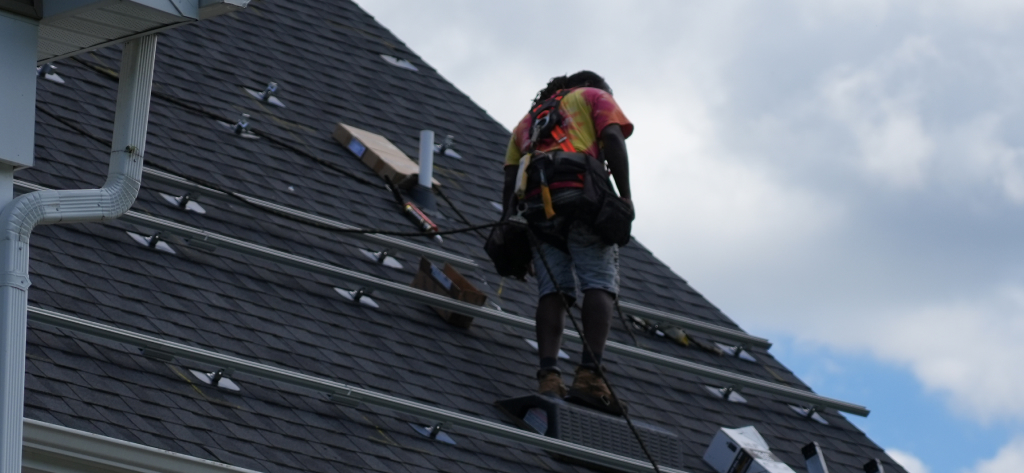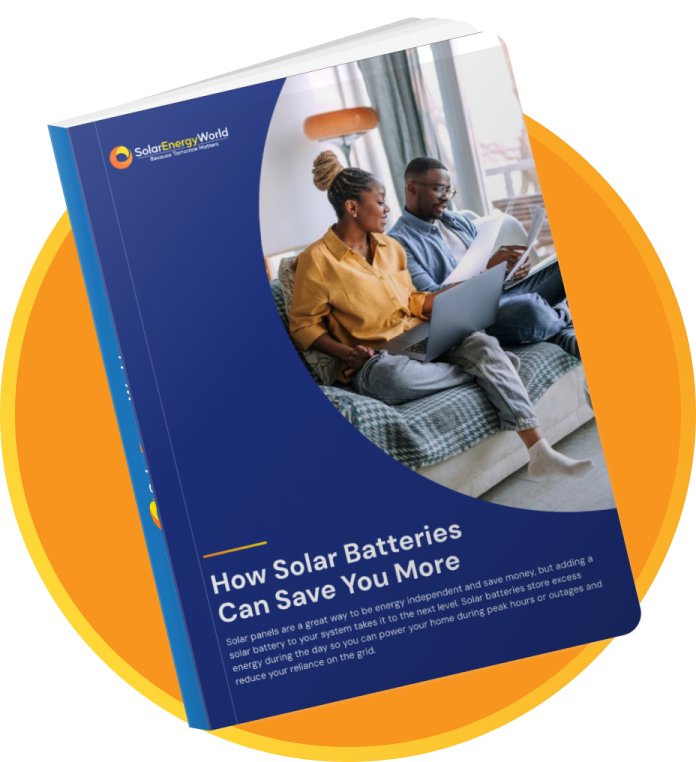Article
Can Solar Panels Withstand Hurricanes & Extreme Weather?

According to data from the National Oceanic and Atmospheric Administration (NOAA), billion-dollar disaster events like major hurricanes are becoming more common. While areas like Florida have high solar potential, the threat of powerful natural events forces many homeowners to think twice about installing renewable energy systems on their property. Fortunately, solar panel designs prioritize durability to withstand excessive wind loads, making them an invaluable resource in hurricane-prone regions.
Ready to learn more about how solar panels hold up under extreme weather conditions? Join us for a deep dive into solar panel durability!
Understanding Solar Panel Durability
Most solar panels are constructed to handle wind loads up to 140 miles per hour (mph) or 2,400 Pascals. These ratings align with wind speeds of moderate to severe hurricanes based on the Saffir-Simpson Hurricane Wind Scale. Here’s a breakdown of wind speeds and hurricane strengths:
- Tropical Depression: Less than 38 mph
- Tropical Storm: 39 to 73 mph
- Category 1 Hurricane: 74 to 95 mph
- Category 2 Hurricane: 96 to 110 mph
- Category 3 Hurricane: 111 to 130 mph
- Category 4 Hurricane: 131 to 155 mph
- Category 5 Hurricane: Greater than 155 mph
On average, about 14 significant storms develop in the Atlantic Ocean, Caribbean, and Gulf of Mexico each year. Of those, around 7 become hurricanes, with 3 of those categorized as major hurricanes (Category 3 to 5 on the Saffir-Simpson scale). As such, the chances of encountering extreme hurricane winds above the standard solar panel durability threshold are relatively low.
During the testing phase of solar panel development, durability is often assessed using a push-pull pressure test, which measures the amount of flex each module can withstand within its frame. Others use static-load tests to simulate excessive winds. The results vary among photovoltaic (PV) manufacturers, so it’s important to understand the pressure and wind ratings of the specific model you choose.
Today, many hurricane-prone areas enforce higher durability standards for solar panel arrays. For example, Florida requires most PV arrays to withstand 160 mph winds and 3,300 Pascals of pressure for added security during storm season.
Real-World Performance of Solar Panels in Hurricanes
We can better understand how solar panels perform under extreme weather conditions by looking at reports from previous storms. Hurricane Sandy, the massive Category 3 superstorm that made landfall on the northern Atlantic coast in 2012, delivered sustained winds of 115 miles per hour. However, solar farms in New Jersey and surrounding areas saw minimal damage.
In 2018, Hurricane Florence decimated coal-powered electricity sources in North and South Carolina with 150 mph winds, but solar operations were up and running the following day.
The ability to capture and store solar energy in the event of a major storm also serves as a significant benefit for solar owners. Utilizing a solar battery lets you keep the lights on even when the grid goes down.
Solar Panel Mounting Systems and Wind Loads
Strong mounting constructions are an important factor in a solar panel system’s durability in the face of hurricane-force winds. In fact, data from the National Renewable Energy Laboratory (NREL) shows that loose fasteners are among the leading culprits of PV damage during extreme weather events.
There are numerous mounting options for solar panel arrays that each offer various advantages and disadvantages. For example, clamping fasteners are a common structural feature in many solar panel bracket systems because they allow for quick and easy installation. However, they tend to fail under high-wind conditions.
Additional Protective Measures for Solar Panels
When purchasing your solar panels, consider opting for models with hurricane-resistant glass or other protective coatings. Some manufacturers may offer covers to place over your panels when major storms approach. Both of these options can provide additional protection from extreme winds and airborne debris.
Seasonal maintenance and storm preparation tasks will help minimize the risk of wind damage and keep your solar panel system running for years to come. As hurricane season approaches, you’ll want to tighten all fasteners to ensure brackets and mounts are secure and inspect your roof and connection sites for signs of damage or potential leaks.
This is also a good time to consult with your insurance provider to confirm that your photovoltaic array is covered. Ask about what types of damage are included in your policy and whether or not you’re required to take certain steps, like professional maintenance, to guarantee eligibility.
When a powerful storm is heading your way, power down your system and return all tracking mechanisms to the storage position to minimize wind exposure. Place any protective coverings over your panels and double-check that all components are properly secured.

How Solar Batteries Can Save You More
Can Solar Panels Withstand Other Extreme Weather Events?
While hurricanes have a major impact on people in coastal areas, heavy snowfall, hailstorms, rainfall, and drastic temperatures pose a greater threat to those in other parts of the country. Fortunately, solar panel systems undergo a range of testing to determine their durability against various weather conditions.
Extreme temperatures can decrease your solar panel system’s efficiency but shouldn’t cause damage beyond standard wear and tear. The overall operating temperature of solar panels ranges from -40℉ to 185℉, but output generally decreases as the temperature rises.
Research shows that residential photovoltaic systems rarely incur long-term impacts from severe weather events like blizzards and floods. However, consistent exposure to harsh environmental elements can ultimately shorten the lifespan of your solar panels.
That being said, you can mitigate the effects by taking action before and after these events occur. Tasks like removing snow accumulation and inspecting for damage immediately following a major storm can keep small problems from developing into catastrophic issues. Solar panels may not be completely weatherproof, but they are highly resilient in the face of wind, water, and ice.
Are Solar Panels a Safe Investment in Hurricane Zones?
Solar panel systems are designed and tested for optimal durability in extreme weather conditions. While standard PV arrays can withstand all but the most severe hurricane winds, investing in a product that meets higher wind-loading and pressure standards might be wise if you live in a hurricane-prone area.
In either case, a solar energy system may drastically reduce your average utility costs and provide power to your home when the electrical grid goes down following a significant storm. Don’t let the potential threat of inclement weather keep you from enjoying these benefits!
At Solar Energy World, we’re committed to helping our customers reap the rewards of renewable energy. Contact us today for a free solar estimate!
Want a Free Solar Estimate?
Fill out the form to get started today.

